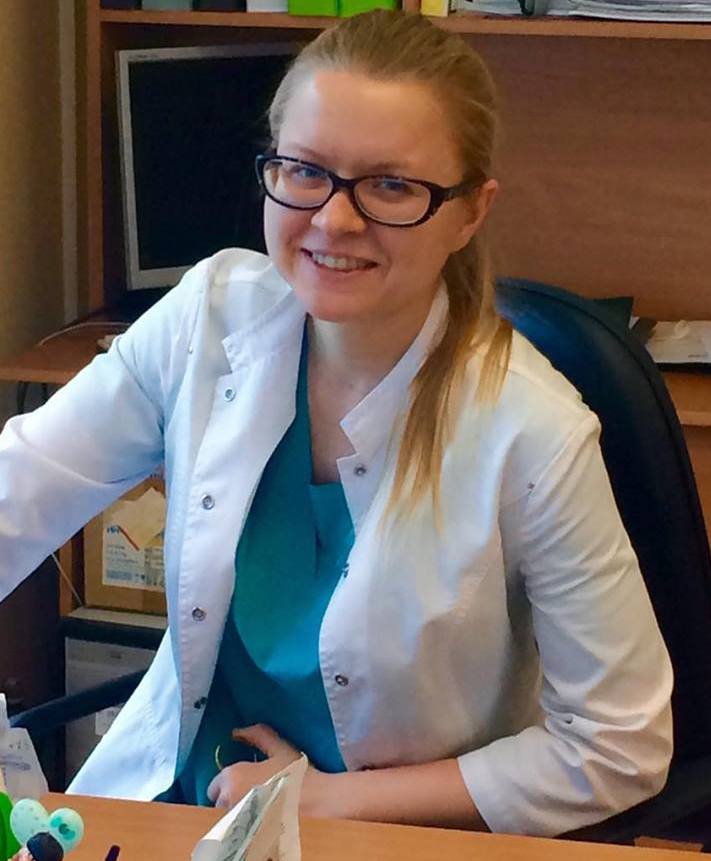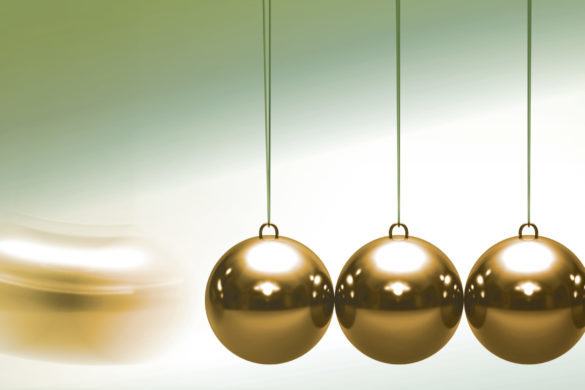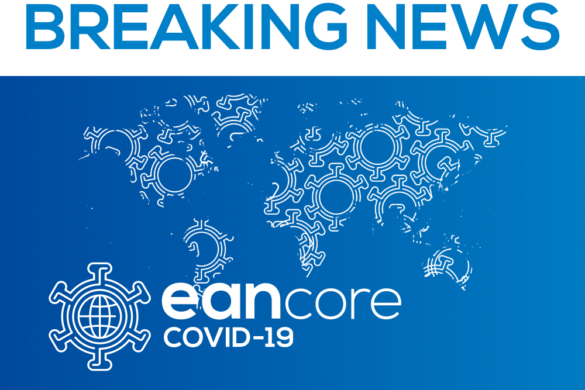Alshimaa Othman, MD, Cairo, Egypt
Term of the stay: 16.4. – 28.9.2018
Hosting department:
Department of Neuroscience. Neurology Unit, Nuovo Ospedale Civile Sant’Agostino Estense,
via Giardini, 1355, 41126 Modena, Italy
Supervisor : Prof. Stefano Meletti
I would like to express my deep gratitude for the EAN for giving me the opportunity to have this really great educational experience at the operative neurology unit of Baggiovara Ospedale, Modena, Italy. My wards can’t express how grateful I‘m for my mentor prof. Stefano Meletti, my colleagues at the epilepsy unit Laura & Giada, all other neurologists, residents (Elisabetta, Ludo, cristina, valantina, Jessica,…..), radiologists, neurosurgeons, nurses & EEG technicians (I wish I could mention the names of all of them, but this would be a really long list!!!). They were always welcoming, supportive & really helpful, which provide an optimum atmosphere not only for learning, but also for enjoying my stay in Italy. These memories would stay with me forevere & in fact, I’m going to deeply miss all of them.
Baggiovara hospital has a comprehensive epilepsy unit, with a 2-3 times weekly outpatient clinic, where we used to interview new cases, follow up old ones, including drug-resistant cases & thoses in the transition from aldolescence to adulthood.
For those patients with drug-resistant epilepsy, who can be candidates for epilepsy surgery an admission would be usually planned in order to evaluate them presurgically. This includes longterm EEG monitoring, brain imaging including MRI, fMRI, PET scan & other modalities, if needed, neurospychological evaluation & then the cases would be discussed in a meeting with the neurosugeons in the presence of the radiologists & neuropsychologists. If then there is a concordance, cases would be scheduled for surgery. After surgical intervention, those patients are followed periodically to check the post-surgical response & accordingly modify the plan of management.
In addition to the epilepsy surgery, the hospital has a really good protocol for status epilepticus & long-term EEG monitoring. I had the opportunity to spend a lot of time with the EEG , including the cases suspected of having a non-convulsive status epilepticus, which was a really valuable experience.
During my stay in Italy, I had the opportunity to attend the 41st national congress of the Italian league against epielpsy (LICE), which for me, was absolutely an addition, for which I’m really grateful to my mentor prof. Meletti.
Apart from education, what I loved most about Italy was the Italian people themselves (sono infatti tantissimi carini). One can find them ready for helping whever you need them.
Overall, I can rate my fellowship as very good, but I have some small note;
- The period of 6 weeks is, in my opinion, very short, if one wants to have a good-quality clinical fellowship. This can be good for having a brief general idea about a particular speciality in a particular place. But I know that elongation of the period of the fellowship requires increase in the grant sum, so I think that the grant can tailored according to the period of stay of each individual applicant. For me, initially i was intending a three-months fellowship, but then I extended another 2.5 months, for a total of 5.5 months & of course the grant sum wasn’t sufficient for that.
- Providing a residence as a part of the grant may also serve for saving some money for those requiring longer periods of training.
Otherwise, everything was perfect & I really encourge all young neurologists to apply to this program.

Ekaterina Moskvina, MD, Ekaterinburg, Russia
Term of the stay: 02.07.2018-13.08.2018
Hosting department:
Department of Neurology, Oxford University Hospitals NHS Trust, Oxford Neuromuscular Centre, West Wing, John Radcliffe Hospital
Supervisor: Dr. David Hilton-Jones
I would like to express my sincere appreciation to the European Academy of Neurology for awarding me with the Clinical Fellowship in the Oxford Neuromuscular Centre at the John Radcliffe Hospital under the guidance of Dr. David Hilton-Jones.
During my 6-week educational visit , I could observe in a range of neuromuscular clinics including Muscle Diseases, Myasthenia Gravis, Motor Neuron Disease and Peripheral Neuropathy. Also I attended the weekly Neurosciences Grand Round, in which complex patient’s cases were presented. And I was lucky that Dr. David Hilton-Jones with Dr. Monika Hofer invited me to the 43rd Oxford Muscle Symposium where neurologists and neuropathologists from different countries discussed the challenging neurological cases.
In the outpatient clinic of Dr. David Hilton-Jones, I saw patients with inclusion body myositis, immune-mediated necrotizing myopathy, myotonic dystrophy, Laing distal myopathy, limb-girdle muscular dystrophy, Charcot-Marie-Tooth, desmin myopathy, central core disease, facioscapulohumeral muscular dystrophy, Duchenne and Becker muscular dystrophy and so on. After these six weeks I improved my qualification as doctor and I got valuable professional experience that is so necessary for our hospital and our patients.
In addition to that I had a great opportunity of attending other Neurology Consultants such as Dr. M Isabel Leite, Pr. David Bennett, Pr. Martin Turner, Dr. Jacqueline Palace
Also, I would like to thank Dr. Ravi Knight who educated me a lot about electromyography, Dr. Monika Hofer who helped me enrich my knowledge in the interpretation of muscle biopsy and Jane Freebody, physiotherapist, who showed me the importance of physiotherapy in the management of patients with neuromuscular diseases and also gave me some useful advice on how to improve the quality of life of patients and their families.
It was a very valuable professional experience for me. As I planned I am going to share all gained knowledge about comprehensive approach to management of patients with neuromuscular diseases with my colleagues and to implement a new approaches to diagnosis and therapy of neuromuscular diseases.

Maia Tighashvili, MD, Tbilisi, Georgia
Term of the stay: 01 May 2018 – 12 June 2018
Hosting department:
Department of Neurology, Atkinson Morley Wing, St George’s Hospital, Blackshaw Road, Tooting, London SW17 0QT
Supervisor: Dr. Anthony Pereira, Consultant Neurologist
At the beginning of my report , I want to thank to the EAN group for supporting my clinical fellowship. It was one of the best experiences of my professional life, I learnt a lot, more than I was expecting, it helped me to increase my knowledge in neurology, in practical and theoretical field. This was a very profitable, useful and impressive experience.
I spent six weeks from 01.05.2018 until 12.06.2018 with hyperacute and acute stroke therapy team. William Drummond Ward is a HASU stroke unite located in the Atkinson Morley Wing at the St. George’s University Hospital. During the fellowship, I observed many patients with an acute stroke, as my interest sphere is urgent treatment of patients with acute stroke. I improved my theoretical knowledge with attending the weekly clinical conferences presenting unusual cases.
I was involved in the clinical diagnosis of patients. I observed them from first seconds in ER with thrombolysis team, until they were discharged. I spent most of time with stroke team, it was well- organized, highly quilifed team. Door to needle time was very short, and most of results was impressive. It was unforgatable for me to see the the patients who were admitted in the hospital with high NIHSS score and in a few days their disability was minimal . It was very interesting for me when we had discussion about treatment strategies, thrombolysis or trombectomy? About Indications and contraindications. I attended many thrombolysis and some trombectomies. I want to thank to Dr. Anthony Pereira for giving me chance to spend these six weeks in HASU. He is very attentive and educated person. He kindly accepted my attendance at the department. I had an opportunity to attend his outpatients consultations and ward rounds. After this we had an interesting discussions about patients current conditions, diagnostic methods, treatments strategies. He was always delighted to give answers about my question. All these gave me a good experience.
Special thank also go to Dr. Adrian Blight for his support and kind attitude to me. I was well received by him and he was trying to intergrate me in all daily activities from first day to the end. His ward rounds are unforgettable for me, every day spent with him was a great opportunity to enrich my clinical and theoretical experience. I can say that he is a symbol of perfect doctor for me, he is a neurologist with a great experience. I would like to thank all the doctors in HASU , all of them were very helpful and highly qualified.
At the end of my report , I want to thank to Professor marina Janelidze M.D, Ph.D head of department of Neurology , S.Khechinashvili University Hospital, Tbilisi State Medical University and Ana Dzagnidze M.D, Ph.D, Associated professor at Tbilisi State Medical University for giving me recommendation letters for my application. I am very proud to be a member of their team.
I consider that this fellowship was very important for me as a young neurologist. Particularly because of my interest in acute stroke, treatment strategies, I improved my abilities in this field
Again special thanks for supporting me. I am definitely a better Neurologist than before. I hope this program continues supporting young neurologists to improve their knowledge and they will be able to implement new methods of treatments in their countries.

Maria Margarida Gonçalves Arêde Calejo, Porto, Portugal
Term of the stay: 2.1.-29.6.2018
Hosting department:
Neuropathology Department,Groupe Hospitalier de la Pitié Salpêtrière, 47 bd de l’Hopital, Paris, France, zip code 75013
Supervisor: Prof. Danielle Seilhean
First of all, I would like thank the European Neurology Academy for the opportunity and support provided by this grant in order to do a 6 months internship in the Neuropathology Laboratory of the Pitié-Salpétrière Hospital, in Paris, France.
The main objetive of the internship was to learn and gain experience in the field of Neuropathology, particularly in the area of Neurodegenerative diseases and brain banking. Additionally during these 6 months, I was also able to attend the clinical activities of the Movement Disorders Unit of Pitié-Salpétrière Hospital, thanks to Prof Marie Vidailhet.
In Neuropathology Laboratory, I was very well received by Prof. Charles Duckayerts, the laboratory director and eminent Neuropathologist, Prof. Danielle Seilhean and Dr. Susana Boluda, who very kindly accompanied me and served as my supervisor during this internship, as well as by the rest of the laboratory medical and technical staff.
Daily, I followed the usual activities of a Neuropathology department and particularly the activity involved in brain banking. I was able to attend brain collecting procedures in autopsies, the processing of brain tissue for analysis and storage and to participate in brain cutting and sampling for diagnostic purposes.
I was able to learn and actively participate in the neuropathological diagnosis of various cases of neurodegenerative diseases, including Alzheimer’s disease, Lewy body disease, fronto-temporal dementia +/- amiotrophic lateral sclerosis with TDP-43 proteinopathy, among others. Additionally, this Neuropathology Laboratory has a very large and old archive of brain specimens, allowing me to explore and learn about many other rare pathologies from a neuropathological view.
This laboratory is also the reference neuropathology center for the diagnosis of Crewztfeldt-Jakob disease and so I had the opportunity to also learn more about the neuropathological aspects of this disease.
I was also able to briefly accompany the activities of the laboratory in other neuropathology areas, including muscle and nerve biopsy, brain biopsy samples, brain tumor pathology and epilepsy surgery samples pathology.
Weekly, there was a general neuropathology meeting where the most interesting and challenging cases of the week were presented and discussed.
I believe this neuropathology internship was a very important and enriching learning opportunity, not only because it is an area I am interested in but also as part of my general neurology residency formation.
As a complementing part of my internship, I had the opportunity to spend part of the week in the Movement Disorders Unit of the Neurology Department of Pitié-Salpétrière Hospital, under the supervision of the unit’s director, Prof. Marie Vidailhet. I am very grateful to Prof Marie Vidailhet for giving me this opportunity and for all her and her team‘s hospitality and teachings throughout the time I spent there.
The clinical activities took part mostly in the Paul Castaigne building, adjacent to the Neuroapthology laboratory. They consisted mainly of movement disorders outpatient clinics (both general and specialized) and movement disorders hospitalization.
Two to three days a week I was able to accompany Prof Vidailhet‘s and other specialists movement disorders outpatient‘s clinics. These included general movement disorders clinics, specialized dystonia clinics where I was able to assist botulinum toxin treatments, Tourette’s syndrome dedicated clinics and deep brain stimulation (DBS) clinics, including Parkinson’s disease and dystonia patients.
Twice weekly, I accompanied the clinical rounds in the hospitalization ward dedicated to movement disorders patients (Salle Gustave-Roussy). A significant proportion were Parkinson’s disease (PD) patients admitted to introdution or follow-up of advanced pump therapies (apomorphine/duodopa) and PD patients with DBS. There were also patients with various movement disorders admitted for diagnostic purposes or disease follow-up, including dystonia, atypical parkinsonism, complex ataxia syndromes, mitochondrial diseases, among many others. I also contacted and gained experience with common and more experimental and innovative treatments in movement disorders, including those still in clinical trials.
Additionally, I visited the ocular movement analysis laboratory, run by Dr. Bertrand Gaymard. I was able to accompany and learn about this diagnostic technique that can be very useful in the diagnosis of movement disorders.
Overall, this was a very enriching experience, that broadenned my knowlegde and skills in the two areas I am most interested in – movement disorders and neuropathology. I am very grateful to EAN and to all the staff of the Neuropathology laboratory and Movement Disorders Unit in Hospital Pitié-Salpetriere for having allowed and contributed to such an amazing and important professional and personal experience.

Miguel Ângelo de Oliveira Santos, MD, Lisbon, Portugal
Term of the stay: 1.1.-30.6.2018
Hosting department:
Department of Clinical Neurophysiology, Aarhus University Hospital, Nørrebrogade 44, 8000, Aarhus C, Denmark
Supervisor: Associate Professor Hatice Tankisi
First of all I would like to thank very much the EAN Education Committee for this opportunity to improve my knowledge and skills regarding clinical neurophysiology.
The main aim of my clinical fellowship was to get involved and better trained on clinical neurophysiology, including novel research techniques. On the other hand, this opportunity may increase the potential collaboration between the Department of Clinical Neurophysiology of Aarhus University Hospital in Denmark and Professor Mamede de Carvalho’s EMG Laboratory in Lisbon (Portugal), both very involved in research and clinical neurophysiology in amyotrophic lateral sclerosis (ALS) and used to collaborate for the past 25 years.
I spent 6 wonderful months, between 01st January and 30th June 2018, in the Department of Clinical Neurophysiology, Aarhus University Hospital (Denmark), supervised by Associate Professor Hatice Takinsi. This group is recognized as involved in cutting-edge research close to my field of interest – ALS and neurophysiology: so I was enthusiastic about the possibility of working and learning with them.
During the first two months I had the opportunity to follow different neurophysiologists and observe them to perform both clinical and neurophysiological examination on patients with or suspected neuromuscular disorders. Despite the technique being similar, it is always nice to learn and observe different neurophysiologists doing such exams. I learned and observed how to perform the nerve conduction studies with surface electrodes as well as the suralis and ulnaris near-nerve needle technique. Additionally, I also learned the quantitative motor unit potentials (MUP) analysis and peak-ratio technique.
In the remaining months, I had the big and amazing experience of having patients examined by myself, under supervision. I had around 4 to 5 patients per week. I could perform the nerve conduction studies in the upper and lower limbs. In patients with the suspicion of polyneuropathy, I also practised the suralis and ulnaris near-nerve needle technique. Later on, I was focused mainly on both quantitative MUP analysis and peak-ratio technique. One of my main goals, in fact, was to get technical insights on this kind of EMG examination and this learning experience added value to the fellowship strongly as it was rewarding beyond any expectations.
Besides these more clinical neurophysiological techniques, I was involved in the research field. I followed Associate Professor Hatice Tankisi and her students on the very interesting threshold-tracking techniques, in particular: nerve excitability, MScanFit MUNE and the muscle velocity recovery cycle. After that, I had the opportunity to practise all of these novel techniques in volunteer healthy subjects.
During the fellowship I enjoyed the fully educational-oriented activity of the department. On each Friday, during the EMG conference, all of the neurophysiologist and residents from the department discussed the most interesting and challenging cases of the week. Moreover, on Thursdays there was a Science Meeting/Journal Club where research and PhD students presented and discussed their own projects. On other times, original papers in the field of clinical and research neurophysiology were also presented.
I would like to thank so much Dr. Peter Orm Hansen for accepting my candidacy at the department, my supervisor Associate Professor Hatice Tankisi and all of the department Staff for following and help me growth in this field.
I also have to thank so much to Professor Mamede de Carvalho, who strongly supported my application to EAN Clinical Fellowship and made this collaboration possible.
Definitely, I recommend this wonderful experience to every resident or young specialist who wants to follow the neurophysiology pathway. Besides the high level of teaching and accuracy that characterizes the environment of the department, I was very well received in Denmark and made me fell like home.
Tak (Thank you)!












